Tungsten Concentrate Output Limitation of China, 2013
- Details
- Category: Tungsten's News
- Published on Friday, 13 September 2013 15:02
- Hits: 2426
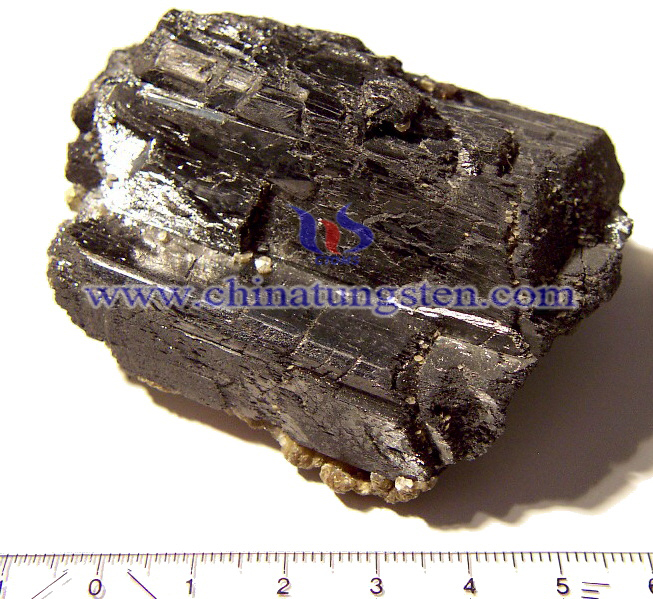
Yesterday, the Ministry of Land and Resources issued the announcement about tungsten concentrate output limitation in 2013. In 2013, the tungsten concentrate output limitation is 890,000 tons. The Ministry of Land and Resources will keep the output control in 2012 and continue imposing control on total of comprehensive utilization. On December 31, 2013, the general office of the Ministry of Land and Resources issued the first of tungsten concentrate output limitation, based on 50% of output limitation in 2012. 2,000 tons of tungsten concentrate was not distributed. Tungsten concentrate output limitation which has been sent to every province and autonomous region is increased by 2,000 tons, compared with 2012. Total of primary mining is 71,000 tons and total of comprehensive utilization is 18,000 tons, increased by 1,600 tons and 400 tons respectively.
Tungsten concentrate output limitation for Jiangxi is 37,750 tons, increased by 650 tons; for Hunan is 23,100 tons, increased by 500 tons; for Yunnan is 6,000 tons, increased by 500 tons; for Guangdong is 3,260 tons, increased by 110 tons; for Zhejiang is 450 tons, increased by 100 tons; for Heilongjiang is 1100 tons, increased by 100 tons; for Xinjiang is 300 tons, increased by 100 tons; for Hubei is 300 tons, increased by 50 tons.
Tungsten concentrate output limitation for Guangxi is 3,000 tons, decreased by 110 tons.
Tungsten concentrate output limitation for Fujian is 2900 tons; for Inner Mongolia is 1,500 tons; for Qinghai is 140 tons; for Henan is 6,000 tons; for Gansu is 1,710 tons; for Hainan is 190 tons and for Shanxi is 100 tons. The output limitation for those provinces or autonomous regions is the same as last year.
The announcement requires to stopping accepting application on prospecting and mining for new rare earth or tungsten concentrate. The new set-up rare earth and tungsten concentrate must conform to output limitation and requirements for capacity balance. Compared with 2012, the fifth situation is set up: the program which is in accordance with industrial policy, mineral resources development program, configuration scheme of mining right, output limitation and requirements of provincial government should be given key support.
The announcement also stresses that the Ministry of Land and Resources will decompose the tungsten concentrate output limitation which has been sent to every local competent department of land and resources. The Ministry of Land and Resources will also inspect monthly reports or quarterly reports and check the implementation accordingly.
Tungsten Manufacturer & Supplier: Chinatungsten Online - http://www.chinatungsten.com
Tel.: 86 592 5129696; Fax: 86 592 5129797
Email: sales@chinatungsten.com
Tungsten Picture Center: http://picture.chinatungsten.com
Tungsten Video Center: http://v.chinatungsten.com
Tungsten News & Tungsten Prices, 3G Version: http://3g.chinatungsten.com
Carbide Tool Maker Micro 100 Grows into Meridian’s Biggest Manufacturer
- Details
- Category: Tungsten's News
- Published on Tuesday, 10 September 2013 16:39
- Hits: 2387
The $15 million-a-year business sells from a catalog of 12,000 carbide tools to more than 600 U.S. distributors and others in 40 countries.
Carbide is 90 percent tungsten, one of the hardest metals on the planet. Micro 100 has dozens of machines — Dale Newberry says it’s more like hundreds, but he’s lost count — most with grinding wheels coated in industrial diamond, the only substance known that will cut tungsten. The result is a cutting tool that Newberry says will stay sharp 10 or 20 times longer than steel.
Micro 100 makes a miniature end mill the diameter of a human hair for manufacturing optical and medical equipment. Its most expensive custom carbide tools sell for more than $1,000.
Newberry gestures toward his twice-expanded shop stuffed wall-to-wall with machines, some worth nearly a half-million dollars.
Tungsten Carbide Manufacturer & Supplier: Chinatungsten Online - http://www.tungsten-carbide.com.cn
Tel.: 86 592 5129696; Fax: 86 592 5129797
Email: sales@chinatungsten.com
Tungsten Picture Center: http://picture.chinatungsten.com
Tungsten Video Center: http://v.chinatungsten.com
Tungsten News & Tungsten Prices, 3G Version: http://3g.chinatungsten.com
Vital Metals Secures Environmental Nod for Queensland Tungsten Project
- Details
- Category: Tungsten's News
- Published on Thursday, 05 September 2013 17:44
- Hits: 2280
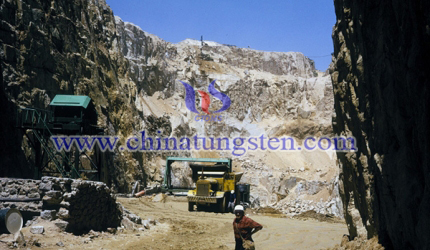
Vital Metals (ASX: VML) has been issued a final environmental authority for its Watershed Tungsten Project in Queensland, clearing away for the grant of the Mining Leases.
The company is partnered with Japan Oil, Gas and Metals National Corporation (JOGMEC) and Macquarie Bank to develop Watershed, which is a ranked amongst the top 10 non-Chinese projects with potential for further growth as it is open along strike and at depth.
JOGMEC have recently secured their right to 30% of the project while Macquarie Bank provided assistance to Vital via a financial facility.
Tungsten is one of a number of “critical elements” that will become increasingly scarce from 2015 according to reports, with the Chinese already accounting for more than half of world appetite.
The company noted that the fundamentals of the tungsten market look strong with price increases in APT being matched by significant new investment in metal production.
Recently, HC Starck announced a joint venture that would allow it to increase its penetration into Asian markets while Xiamen Tungsten Co Ltd announced that it would build a US$160 million hard alloy production plant to meet increasing demand.
Vital plans to develop Watershed as a stable and reliable supply of tungsten concentrate necessary for the production of the tungsten metals that play critical roles from the tungsten carbide buttons on exploration drill bits to the high strength alloys used in the new generation of aircraft.
Watershed Scheelite Deposit currently hosts a Resource of 49.2 million tonnes at 0.14% WO3.
It is located about 35 kilometres northwest of the historic Mount Carbine tungsten deposit, which produced 10,000t WO3 over 16 years, between 1970 and 1986.
The grant of the Environmental Authority is the final step required before the Queensland Department of Natural Resources and Mines is able to consider the grant of the mining leases that make up the project.

Tungsten Manufacturer & Supplier: Chinatungsten Online - http://www.chinatungsten.com
Tel.: 86 592 5129696; Fax: 86 592 5129797
Email: sales@chinatungsten.com
Tungsten Picture Center: http://picture.chinatungsten.com
Tungsten Video Center: http://v.chinatungsten.com
Tungsten News & Tungsten Prices, 3G Version: http://3g.chinatungsten.com
Tungsten Resources Take Control of Spanish Tungsten Mine
- Details
- Category: Tungsten's News
- Published on Tuesday, 03 September 2013 17:23
- Hits: 2211
Tungsten resources has confirmed it has taken ownership of the La Parrilla tungsten mine in southwest Spain.
It has initially put down €900,000 and will make further phased payments of €1.3 million in the third quarter of next year and of €500,000 12 months later.
It’s expected these will be funded from the cash flows from tailings production at La Parrilla.
The decision to move to full title ownership was taken by W following the extension drilling and initial evaluation of the mine and its development potential, it said.
Chairman Michael Masterman added: "La Parrilla will be a major tungsten mine and this decisive step will allow us to proceed with clear confidence and secure title towards development.
“With the tailings project on track to start first production later this year, we look forward to the next development phase of the mine."
Tungsten resources is sitting on one of the largest deposits outside of China. It holds a JORC compliant inferred reserve of 47mln tonnes and almost 40,000 tonnes of contained tungsten metal at a 0.09% grade.
Consultants Golder Associates also identified higher grade zones in the middle of, and adjacent to, the existing historic pit, which will be a focus for exploration going forward, the company said. There was a 0.04% cut-off grade.
Tungsten Manufacturer & Supplier: Chinatungsten Online - http://www.chinatungsten.com
Tel.: 86 592 5129696; Fax: 86 592 5129797
Email: sales@chinatungsten.com
Tungsten Picture Center: http://picture.chinatungsten.com
Tungsten Video Center: http://v.chinatungsten.com
Tungsten News & Tungsten Prices, 3G Version: http://3g.chinatungsten.com
Tungsten Mining signs MoU for New Investment
- Details
- Category: Tungsten's News
- Published on Monday, 02 September 2013 18:38
- Hits: 2182
Tungsten Mining has signed a memorandum of understanding (MoU) with a Chinese investment group that would see a number of that company’s clients invest up to A$15-million in Tungsten Mining.
The investment would take place through a share subscription that would be undertaken in three tranches.
The first tranche would consist of some 12.5-million shares to raise A$2.5-million, by the end of September. The second tranche, which would have an equal number of shares, would be issued by the end of October.
The third tranche, which would consist of some 30.3-million shares, and would raise A$10-million, would be issued by May next year.
Tungsten Mining said on Monday that subject to the A$15-million raising, the MoU also provided for a definitive offtake agreement under which the investors would be entitled to acquire 50% of the Kilba project’s tungsten concentrate production, at a discount to the prevailing market price.
Tungsten MD Paul Berndt said that both the offtake and subscription agreement were subject to due diligence, as well as shareholder and regulatory approval.
“This backing will ensure that we can accelerate the definitive feasibility study of our Kilba project, and will firmly set the company on a trajectory towards developing its first tungsten mine,” Berndt said.
A recently completed scoping study into the Kilba project indicated that a 1.1-million-tonne-a-year operation could be developed for a capital investment of some A$56-million. The project, which would have an initial mine life of seven years, would deliver some 154 000 t/y of tungsten.
Tungsten Manufacturer & Supplier: Chinatungsten Online - http://www.chinatungsten.com
Tel.: 86 592 5129696; Fax: 86 592 5129797
Email: sales@chinatungsten.com
Tungsten Picture Center: http://picture.chinatungsten.com
Tungsten Video Center: http://v.chinatungsten.com
Tungsten News & Tungsten Prices, 3G Version: http://3g.chinatungsten.com
Tungsten Alloy Weight for Aircraft
- Details
- Category: Tungsten's News
- Published on Wednesday, 28 August 2013 17:59
- Hits: 2282
Flight control system
Tungsten alloy weights are usually used to optimize the flight control performance, such as rudder, elevator and ailerons, have a greater advantage than other traditional materials such as steel or lead.
Rotor blades
Helicopter rotor blades require the best balance. Tungsten alloy can be installed in an imbalance in the location of a single leaf in the manufacturing process, such as in helicopter balancer.
Propeller
Tungsten alloy weights can be loaded fail-safe device, in order to avoid the problem of speeding.
Inertial system
Tungsten alloy can be loaded to control the rotation of the gyro flywheel to store kinetic energy. Tungsten alloy used in this gyroscope has two main purposes:
1) To adjust the center of gravity of the triangle.
2) To adjust the beam of the laser oscillation frequency.
Tungsten Manufacturer & Supplier: Chinatungsten Online - http://www.chinatungsten.com
Tel.: 86 592 5129696; Fax: 86 592 5129797
Email: sales@chinatungsten.com
Tungsten & Molybdenum Information Bank: http://i.chinatungsten.com
Tungsten News & Tungsten Prices, 3G Version: http://3g.chinatungsten.com
Molybdenum News & Molybdenum Price: http://news.molybdenum.com.cn
Yen devaluation helps Japan's cemented carbide business performance
- Details
- Category: Tungsten's News
- Published on Wednesday, 28 August 2013 09:08
- Hits: 2384
Mitsubishi Materials Corp. reported an increase of 16% in consolidated group net sales for the first quarter of its new financial year (2013/2014) ended June 30 to Yen 423 billion ($4.4 billion). There were reported increases in sales for cemented carbide tools as a direct result of the depreciation of the Yen, but sales of PM parts decreased due to the end of eco-car government subsidies in Japan.
This is largely due to the 13.5% rise in cement sales and a 13.8% rise in sales of the metals division. MMCs ‘Advanced Materials & Tools’ division, which includes Diamet Corp, Mitsubishi Materials Tools Co., Ltd. and MMC Superalloy Corp, continued in negative territory in the quarter with a 1.7% decrease in sales to Yen 36 billion ($369 million). However, operating profit for the Advanced Materials & Tools division increased by 15.1%. Anyway, sales for cemented carbide were increased as a result of this depreciation.
Tungsten Carbide Manufacturer & Supplier: Chinatungsten Online - http://www.tungsten-carbide.com.cn
Tel.: 86 592 5129696; Fax: 86 592 5129797
Email: sales@chinatungsten.com
Tungsten Picture Center: http://picture.chinatungsten.com
Tungsten Video Center: http://v.chinatungsten.com
Tungsten News & Tungsten Prices, 3G Version: http://3g.chinatungsten.com
Happy Creek drills 2.7 metres of 2.0 % tungsten (W03) at the Fox property
- Details
- Category: Tungsten's News
- Published on Wednesday, 28 August 2013 08:34
- Hits: 2200
Happy Creek Minerals Ltd. is pleased to announce preliminary results from the first drill hole of the 2013 program on its 100% owned, 165 square kilometre Fox tungsten property. The Fox property is located approximately 75 km northeast of 100 Mile House, in the south-central Cariboo region of British Columbia, Canada.
At the RC prospect, drill hole F13-01 is a step out approximately 40.0 metres west of F12-17 (20 metres of 0.63% tungsten trioxide (W03). F13-01 is a vertical hole that was lost at a depth of 30.4 metres while in the mineralized zone due to a drilling problem. The favorable geology consists of calc-silicate and skarn which was intersected from surface, with trace tungsten beginning from 8.0 metres. Starting at 26.8 metres the hole intersected 2.72 metres grading 2.01% tungsten trioxide that is thought to be near true thickness. Other values in this interval include 0.27% zinc, 1.85 g/t silver, 0.09 g/t gold and 1.63 g/t indium. This drill site was subsequently repeated and completed through the favourable horizon and results are pending.
On the Fox property, positive values of tungsten occur in rock, stream sediment, soil and drill core in a 10 km by 3 km area. Drilling by the Company in 2007 at the Nightcrawler zone outlined positive tungsten values in multiple horizons over an area 1.5 km by 500 metres in dimension. Four kilometres to the north, four outcropping mineralized zones are named from south to north the 708, BN, RC (Ridley Creek) and BK prospects. These prospects are within a favorable target horizon (calc-silicate or skarn) spanning a distance of three kilometres and a lateral extent thought to be greater than one kilometre.
A review of drill results from the Fox property to date identified 23 intervals averaging 3.1 metres and 2.41 % tungsten trioxide that comprise a portion of the favourable horizon thickness. Drill highlights from 2011 and 2012 at the RC prospect include 7.35 metres of 1.22% tungsten trioxide, 19.4 metres of 0.82% tungsten trioxide, 11.0 metres of 0.80% tungsten trioxide, 20.0 metres of 0.63% tungsten trioxide and 24.7 metres of 0.68% tungsten trioxide. One kilometer south of the RC prospect, drilling at the BN prospect returned three intervals in hole F12-27: 4.1 metres of 1.78% tungsten trioxide, 14.8 metres of 4.0% tungsten trioxide and 24.0 metres of 0.79% tungsten trioxide including 5.8 metres of 2.01% tungsten trioxide. One kilometre north of the RC prospect, drilling at the BK prospect returned 5.0 metres of 0.68% tungsten trioxide. (Refer to Press Release dated November 19, 2012).
A grade of 2.4% tungsten trioxide contains 24.0 kg W03 per tonne of rock, and tungsten prices are around US$35.0/kg W03 in concentrates and US$42.0/kg W03 as upgraded APT (ammonium paratungstate) (1).
Tungsten is regarded as a strategic and critical metal for industrialized countries. Over 50% is used in cemented tungsten carbide to make cutting tools for the construction, metalworking, mining, oil and gas drilling industries. The balance is used for heavy alloy in applications requiring high temperature stability and density in electronic components, super-alloys, wear-resistant alloys and chemicals for various applications. Tungsten is being used and evaluated as a more effective radiation shield than lead, requiring 1/10th the thickness of lead (2). Zinc and indium also occur with tungsten at the Fox property. Indium is a rare metal used in liquid crystal applications such as touch screens and prices have risen to over US$550/kg ($5.50/gram).
The proximity to infrastructure, near surface setting, large scale and presence of high grade tungsten are thought to make the Fox property a unique and attractive new discovery in the global tungsten sector.
Tungsten Carbide Manufacturer & Supplier: Chinatungsten Online - http://www.tungsten-carbide.com.cn
Tel.: 86 592 5129696; Fax: 86 592 5129797
Email: sales@chinatungsten.com
Tungsten Picture Center: http://picture.chinatungsten.com
Tungsten Video Center: http://v.chinatungsten.com
Tungsten News & Tungsten Prices, 3G Version: http://3g.chinatungsten.com
Rising Tungsten Prices
- Details
- Category: Tungsten's News
- Published on Tuesday, 27 August 2013 14:27
- Hits: 2481
We have been watching tungsten prices rise, pull back and rise again.
We had assumed that the market was supported by China, the dominant tungsten producer and by a forecast pullback in production from CanTung the world’s larger tungsten mines.
But tungsten prices may also indicate a return of industrial confidence and economic growth within some key manufacturing economies.
Tungsten is principally used for bits for cutting tools which are mainly used in manufacturing and heavy industry.
Manufacturers need to supply machines with tungsten carbide cutting tools as a first step before ramping up industrial production ahead of new forecast demand.
In past cycles new Chinese demand has buried the market and forced prices lower but with the market seemingly in balance we assume that new industrial demand is lifting prices.
It is possible that the US DLA and other strategic stockpile agencies are also part of the demand equation with tungsten marked as a critical metal by the major superpowers.
There are a number of new tungsten producers listed in Canada, the UK and Australia which are worth looking at. We would avoid Malaga as its Pasto Bueno tungsten mine is now on care and maintenance.
There are no Tungsten ETFs so there is no potential for ETF sales to distort the market.
Tungsten Carbide Manufacturer & Supplier: Chinatungsten Online - http://www.tungsten-carbide.com.cn
Tel.: 86 592 5129696; Fax: 86 592 5129797
Email: sales@chinatungsten.com
Tungsten Picture Center: http://picture.chinatungsten.com
Tungsten Video Center: http://v.chinatungsten.com
Tungsten News & Tungsten Prices, 3G Version: http://3g.chinatungsten.com
3D Printing With Tungsten & Iron
- Details
- Category: Tungsten's News
- Published on Tuesday, 27 August 2013 14:15
- Hits: 2497
3D printing with metals is not new. But the range of metals that can be 3D printed is increasing quickly. We recently told you about a laboratory breakthrough that allows 3D printing of liquid metal structures at room temperature, something that makes many readers think of the film, Terminator 2: Judgment Day. Closer to immediate and useful reality, industrial 3D printer supplier ExOne has added iron infiltrated with bronze, and bonded tungsten, to the range of metal and ceramic powders that can be used with its multi-material M-Flex machines.
One of the main reasons the company has seen demand for using iron to 3D print parts instead of its existing stainless steel is its lower cost, Rick Lucas, ExOne’s CTO, told Design News in an interview. Iron costs about 25 percent as much as stainless steel. The cost ratio of materials to total part cost also depends on part size: When making parts smaller than the size of the human hand, materials cost is only about 10 to 15 percent of total part cost.
But as parts get larger, materials can be more than 30 percent of the cost. "That's significant," Lucas told us. "You won't find stainless steel in a lot of industrial applications like automotive parts, machine tools, heavy equipment, and support structures. That's where iron is needed, for both cost and strength." Instead, the main use for stainless parts now by ExOne's customers is impellers and abrasive-type pumping applications.
To develop bonded tungsten for 3D printing, ExOne collaborated with a contract design and manufacturing company called rapid prototype + manufacturing (rp+m). rp+m provides rapid prototyping, additive manufacturing, rapid manufacturing, and 3D printing and scanning in-house. In this project, the two companies focused on the design of 3D-printed products for use in protecting people and their environments from ionizing radiation. Along with its partner, Radiation Protection Technologies, rp+m produces these bonded tungsten products as bundled solutions that replace lead in medical imaging and aerospace.
ExOne is also offering two new binders, sodium silicate and phenolic, as alternatives to furan. Phenolic binder is used with ceramic sand for 3D printing molds and cores, used in the sand molding and casting industry. "Depending on the shape and geometry of the part, you may need something stronger than furan," said Lucas. Phenolic creates a higher strength mold or core, allows higher heat alloys to be cast, and reduces the amount of expansion of the mold or core, improving casting quality. Customers in the hydraulic equipment, heavy equipment, and pump industries, as well as aviation and automotive, requested this new binder material. The sodium silicate binder is a greener alternative to furan, reducing fumes and gas during casting.
All of ExOne's 3D printers, including M-Flex, employ a print head that distributes the binder via jetting it into beds of specially formulated materials. The M-Flex build chamber measures 400 mm x 250 mm x 250 mm (15.7 inch x 9.8 inch x 9.8 inch), and achieves speeds of up to 30 seconds per layer. It's designed for manufacturing either short runs or prototypes of metal parts.
Currently available materials for the M-Flex include silica sand, ceramic sand, stainless steel, glass, copper, iron, and tungsten. The goal is to make at least one new material class available every six months, Lucas told us.
The company's internal Material Applications Laboratory is currently working on several other materials in different stages of development. These include alumina, silicon carbide, chromite, titanium, graphite, zirconia, inconel, aluminum, tool steel, and magnesium. "We designed the M-Flex to print multiple materials, as well as let users change settings to optimize them for their specific needs," said Lucas.
Tungsten Carbide Manufacturer & Supplier: Chinatungsten Online - http://www.tungsten-carbide.com.cn
Tel.: 86 592 5129696; Fax: 86 592 5129797
Email: sales@chinatungsten.com
Tungsten Picture Center: http://picture.chinatungsten.com
Tungsten Video Center: http://v.chinatungsten.com
Tungsten News & Tungsten Prices, 3G Version: http://3g.chinatungsten.com




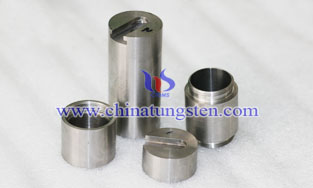


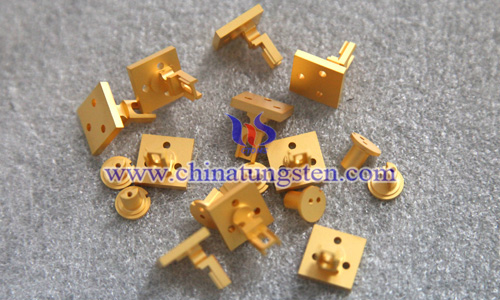
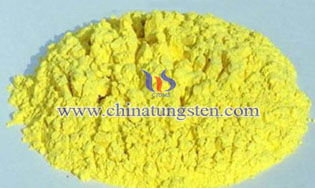
 sales@chinatungsten.com
sales@chinatungsten.com